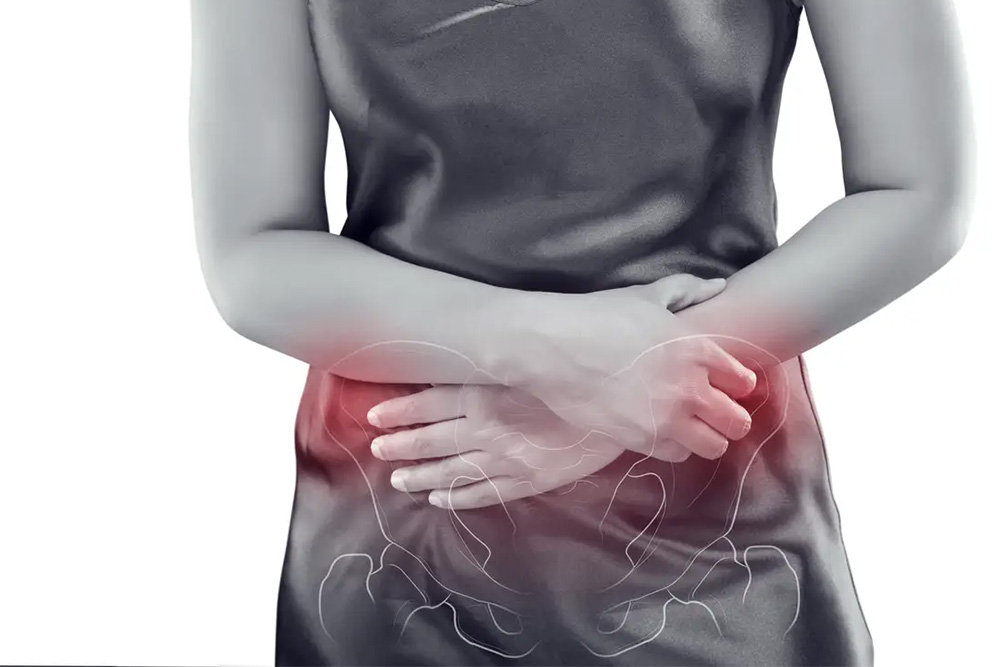What is Womb Prolapse?
Womb prolapse is a condition where the womb (uterus) falls from the natural position into the vaginal canal. This is caused by a weakening of the muscles, ligaments and connective tissue around the vagina area.
It can occur at the same time when other organs (eg bladder and rectum) located in the pelvic region also descend into the vaginal canal. This is known as female genital prolapse.
Who Is At Risk Of Womb Prolapse?
You are at risk of developing womb or genital prolapse if you
- Reach menopause
- Have multiple vaginal deliveries especially big babies
- Perform strenuous physical activity (eg weightlifting or sprinting)
Symptoms of Womb Prolapse
Many women do not experience symptoms during the early stage of the womb prolapse. But you may have womb prolapse if you experience the following symptoms:
- A lump at the opening of the vagina
- Pressure in the vagina or pelvis
- Pelvic discomfort/low back pain
- A decrease in size of the lump at the vaginal opening when lying down
- A decrease in pain or pressure when lying down
In addition, if you have female genital prolapse, you may also experience:
- Needing to go to the bathroom with increased urgency and/or frequency
- Urinary Incontinence (leaking urine)
- Difficulty emptying bladder or bowel
- Constipation
Womb prolapse is rarely a life-threatening condition. However, it is advisable to seek medical attention if you have any of the symptoms:
- Unable to empty your bladder
- Frequent urinary bladder infections
- Bleeding from vaginal area or prolapsed womb
Treatment for Womb Prolapse
Generally, womb (and genital prolapse) can be treated by either surgical or non-surgical methods, depending on your age, the cause and the severity of your prolapse as well as your overall medical status.
Non-surgical method is usually more suitable if you have few or no symptoms especially at the early stage of your womb prolapse. It is also recommended if you are cannot undergo surgery due to medical conditions which may increase your medical risk.
You may need surgery if non-surgical method is no longer effective or when your prolapse has reached its advanced stage. Surgery is also advisable when you are having complications from non-surgical method of treatment (eg use of pessary).
Non-surgical treatment methods:
- Lifestyle modification – We may recommend activity modification such as avoiding heavy lifting or straining if your prolapse is mild and you have little or no symptoms.
- Pessary– For women who are not sexually active or not suitable for surgery, we may treat with a pessary, which is a small plastic or rubber device placed within the vagina for supporting the womb.
- Kegel exercise – These are exercises to strengthen your pelvic floor muscles that support your womb within the pelvis. It can used for mild to moderate cases of womb prolapse as well as to supplement other treatment methods for prolapse.It is very useful exercise to prevent womb or genital prolapse for ladies who have just delivered vaginally. I personally recommend it for all my postnatal women who have just undergone vaginal childbirth.
Surgical Treatment
- Hysterectomy – removal of the womb (uterus). Although this procedure can be performed through the abdomen, vagina or laparoscopy (key-hole surgery), it is commonly done via the vaginal route for womb prolapse. It is usually done with any of the following procedures described below.
- Anterior repair – repair of a descending bladder
- Posterior repair – repair of descending rectum.
Side Effects of Womb Prolapse Treatment
Non-surgical methods like lifestyle changes and Kegel exercises are almost risk-free but you need determination and patience for them to be effective as they require long term compliance.
Pessary, especially after prolonged use, can cause potential problems such as vaginal ulcers, bleeding, infection, irritation and malodorous discharge. This is common especially in older patients who have a thin vaginal lining. When such complications occur, it is important to consult your gynaecologist.
Surgical treatments can be associated with potential risks such as bleeding, postoperative infections and pelvic organ injuries. However, in carefully selected patients with low medical risks, the chances of complications from surgery are reasonably low.
An important consideration to minimising your risk of surgery is to choose a gynaecologist who specialises in the treatment of female genital prolapse (i.e. Uro-gynaecologist).

